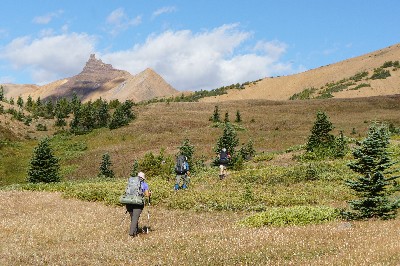
South Chilcotins: A Castle, Two Grizzlies, and a Cardtable
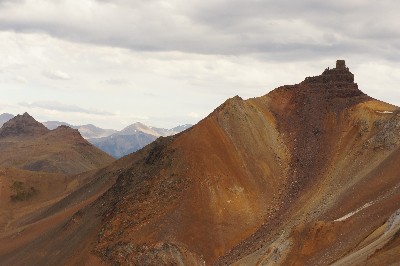
Long weekends around Vancouver are a “problem”. They cause crowds at all the usual hiking spots. Since one of the reasons for even wanting to travel in the backcountry (for us) is avoiding crowds, we search high and low for places that will be empty even on a long weekend. A good bet is a combination of a location that almost no one has heard of, and a very long drive (see our trips up Taylor Creek and Slim Creek). Such are the South Chilcotins.
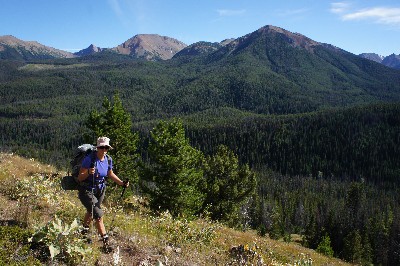
Our friends Jan and Warrick arrived from Vancouver Island on Friday evening just as we rolled back from the August Critical Mass. The next day we left around 6am to beat the long weekend traffic. We drove up the Sea to Sky Highway, over the infamous rattly and rocky Hurley FSR, down to Carpenter Lake and then up progressively smaller dirt roads to the Upper Tyaughton Trailhead, a total of five hours driving. As it often goes on this kind of trip, the trailhead was unmarked, just a small dirt path going into the woods, and we used GPS to make sure we were at the correct location.
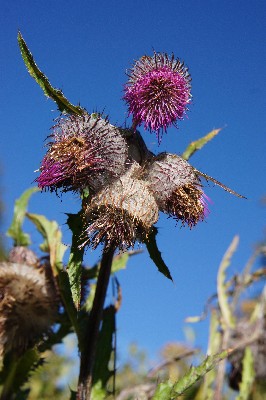
After a few hours of hiking, we left the main trail on a smaller trail heading towards Fortress Ridge. We could see Mt. Sheba in the distance, a mountain that has two similarly sized peaks. Supposedly it was originally named Sheba’s Breasts, but was censored by government officers once the age of political correctness began. We camped on a small open shoulder with views of the Dickson Range in the distance. The night sky was clear and I could see millions of stars (though, I didn’t count them!).

In the morning, we hiked out into open views of the intensely colourful Castle Mountain. With its jagged edges and dark towering peak sitting on top of a lighter base, it looks out of place, as if it was teleported from Utah and dropped on the top of the ridge. This mountain was like the lighthouse of this trip – we were always moving towards it or away from it, using it as a reference point. We contoured behind Fortress Ridge, it was very windy, and we spotted a grizzly bear in the distance. He must have seen us or heard us since he changed direction and ran down another valley. We wondered if we’d see him later, stalking us, but those incidents are very rare.

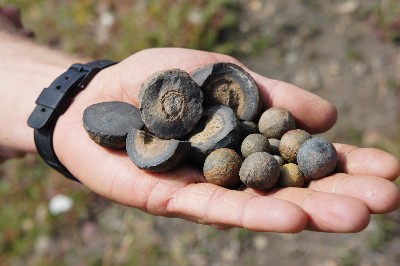
At Castle Pass we stopped for a snack, stashed our packs behind a rock and took a detour to scramble up Cardtable Mountain. The top part of Castle Mtn. was visible behind, like a solitary sentinel watching us. The red-brown soil on the ridge walk, with scattered boulders, conjured images of Mars. Every now and then I found a lone flower, surrounded by a sea of brown. We passed by some huge basalt columns and bright orange and yellow algae. The wind was still very strong, so we had our lunch on the summit behind some rocks and headed back down to the pass to retrieve our packs. We camped just below the pass, by a creek, in a spot that Warrick called “flat, but going downhill”, which we then quoted over and over again in the coming days, although technically he was right…

On our third day we did a day trip to Mt. Cunningham. It looked awfully far from camp, but I assured everyone that it was “not as far as it looks”, another statement which was often quoted and misquoted (“no, it’s farther”). On our way up we saw yet another grizzly, amazing! Then I began noticing funny egg like rocks, perfectly spherical, in all sorts of shapes and sizes. Weird. The views from the top of Mt. Cunningham stretched right across the park, even as far as the eerily flat Dil-Dil plateau, which contrasted with the definitely not flat Ram Mtn behind. We also got a closer view of Mt. Sheba and the fittingly named neighbour Mt. Solomon (Queen Sheba and King Solomon were friends, perhaps friends with benefits). We took the direct route back to camp, along the ridge and then steeply down to camp.
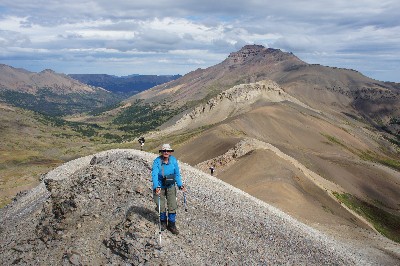
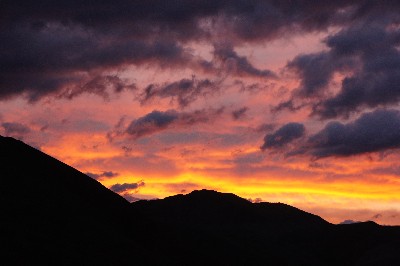
Our last day dawned nice and sunny, and ended in a downpour and thunderstorm. In fact, at one stage we could see the lightning and dark black clouds coming closer and closer. Then lightning struck very close to us, an extremely bright flash – if god was taking a photo with a camera flash, maybe that’s how it would look. The noise from the thunder was so loud that we instinctively grabbed our ears to block out the noise and Warrick fell to his knees. Although later it was determined that this was on purpose since he had been told this would reduce the chance of a direct strike, to this day I have the image of Warrick falling to his knees due to the lightning. We retraced our route across Castle Pass, around Fortress Ridge and down Tyaughton Creek, which was a long way. By the time we arrived back to the car the rain had stopped and we hastily got going, so that Jan and Warrick could catch the last ferry back to Vancouver Island. We all agreed this was one of the most picturesque trips we have ever done.

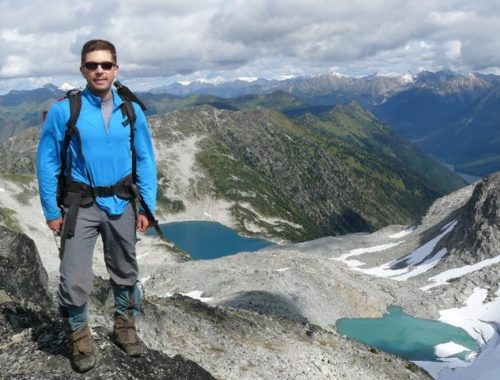
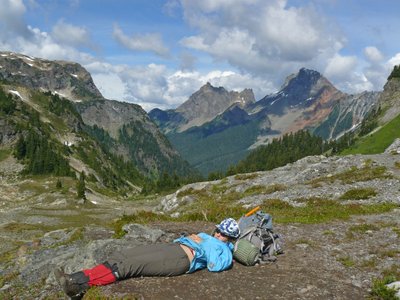
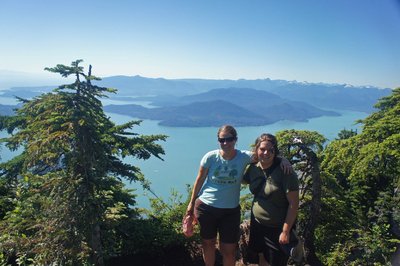
One Comment
Pingback: